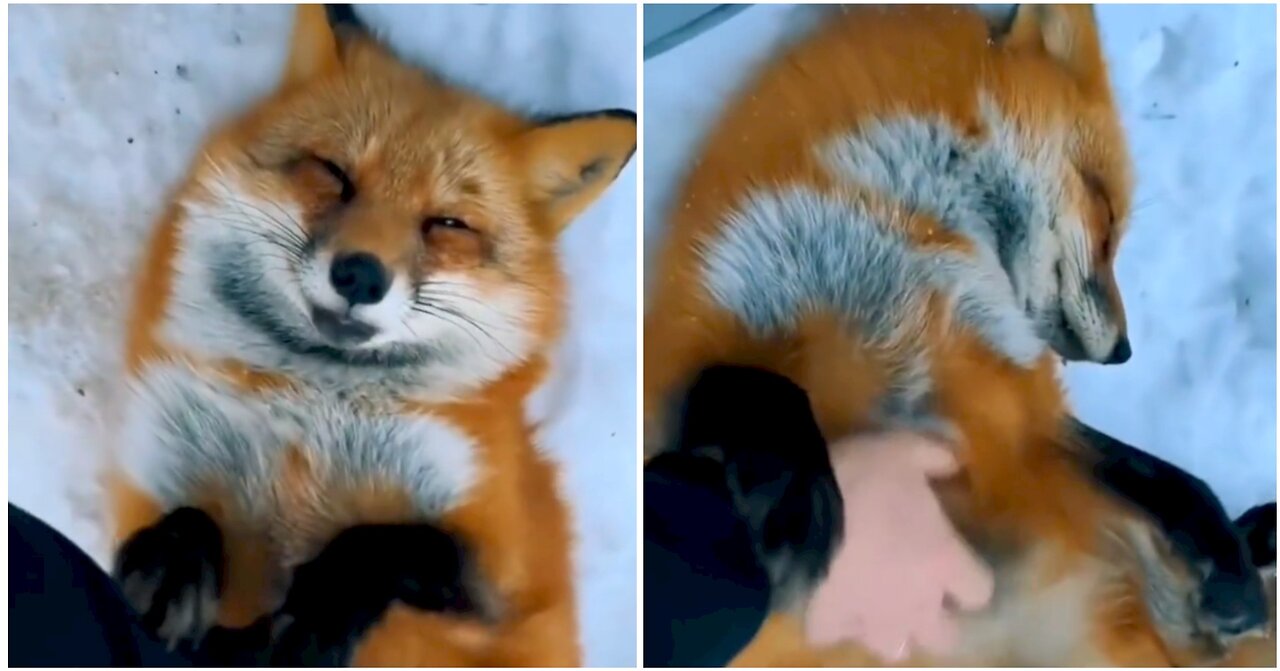Premium Only Content

Hurray.... This Fox fell in love with me
Facts you need to know about foxes:-
Not everyone has four thousand pounds to spend buying a domesticated farm fox and, as such, are restricted to watching wild animals. Getting even a glimpse of a wild rural fox can be frustratingly difficult (and I speak from considerable personal experience there); but, fortunately for those who appreciate being able to see these mammals, foxes have readily taken to our towns and cities and are now frequent visitors to gardens, whether we realise it or not.
Foxes began living in our cities after World War I; a response, many consider, to a change in people’s lifestyles. There has been some suggestion that an outbreak of myxomatosis in Britain during the early 1950s actuated the fox’s colonisation of urban areas, although the current evidence doesn’t support this theory (see urban fox QA). Indeed, it is widely held that the most likely “cause” of urban foxes was the development of once rural land after the First World War; land was built upon and, rather than moving, the foxes adapted to their new surroundings. Whatever the ultimate reason for foxes appearing in our towns, they have thrived in this environment and shortly after World War II they were commonplace in some southern cities. DEFRA, at the time known as MAFF, for example, shot 181 foxes in southeast London during 1947.
My experience, and that of many others, is that foxes readily become used to human activity and learn to ignore it. (It is worth mentioning that tolerance is not the same as “tameness”, which is a mistake many people seem to make – wild foxes are just that, wild, regardless of how relaxed they appear in your company.) In fact, they can become so unfazed by, almost complacent of, human activity that they have been seen in busy high streets during the daytime, they wander around an industrial estate near me in the middle of the day ignoring the cars and workers, and dodge lorries to scavenge on rubbish tips. It should be remembered that foxes have evolved a strategy of judging danger, in centuries past from predators such as wolves and lynx, from a distance, which probably explains why they tend to sit and watch us rather than immediately fleeing.
-
 1:02:59
1:02:59
The Rubin Report
2 hours agoCNN Host Forced to Intervene as Guest Loses His Cool as Republican Calmly States Facts
40.4K32 -
 1:37:01
1:37:01
Professor Nez
15 hours ago🚨LIVE President-elect Trump Meets with President Biden in the Oval Office
19.3K5 -
 2:00:38
2:00:38
Steven Crowder
3 hours agoLet that Sink In: This is why the Left Lost & Elon and Vivek Form New Trump Superteam
337K177 -
 LIVE
LIVE
Benny Johnson
2 hours ago🚨 DADDY'S HOME: Trump Meets Biden At White House LIVE Right NOW, Joe Surrenders Federal Gov to MAGA
16,069 watching -
 LIVE
LIVE
Midnight's Edge
2 hours agoThe TDS of our stars, and scandals of Wicked | MEiTM #639
196 watching -
 LIVE
LIVE
The Shannon Joy Show
19 hours ago🔥🔥COVID Democide Rages On Amidst The Political Circus! Sudden Kidney Failures Are Spiking As The Latest Hospital Horror. Live Exclusive With Researcher John Beaudoin🔥🔥
395 watching -
 4:59
4:59
BuddyBrown
2 days ago $3.23 earnedI've Never Heard a President Talk Like This in my LIFETIME! | Buddy Brown
29.1K13 -
 1:42:01
1:42:01
Graham Allen
4 hours agoElon/VivekAppointed To “DOGE”Pete Hegseth Is The New SECDEF!The Elites Are LOSING THEIR MINDS!!😂😂
95.7K107 -
 LIVE
LIVE
LFA TV
13 hours agoTRUMP MEETS WITH BIDEN LIVE! | LIVE FROM AMERICA 11.13.24 11am EST
6,131 watching -
 0:25
0:25
Liam Reid
21 hours agoI Flew To The Dirt Biking Capital of the WORLD!
9.28K